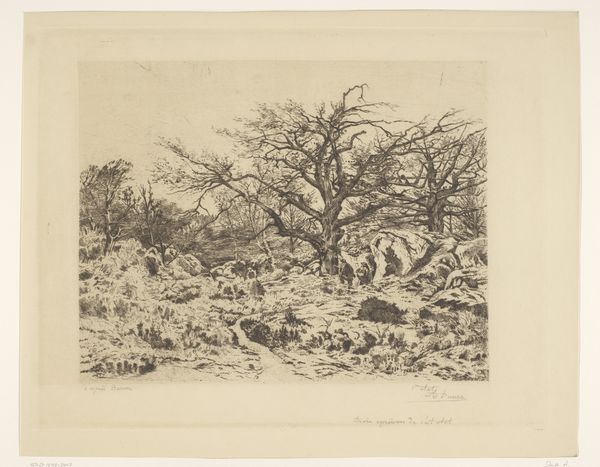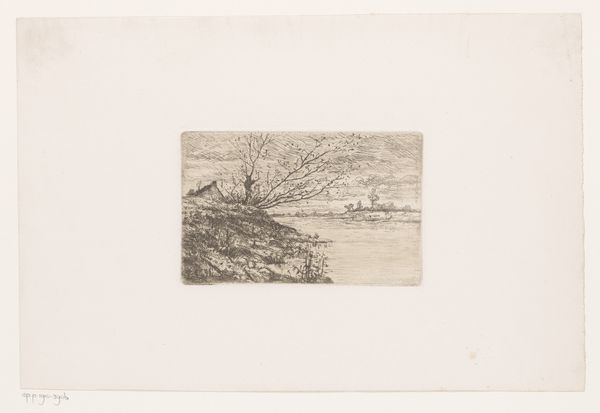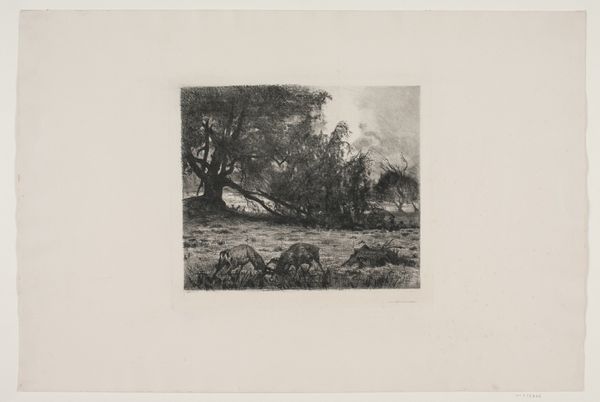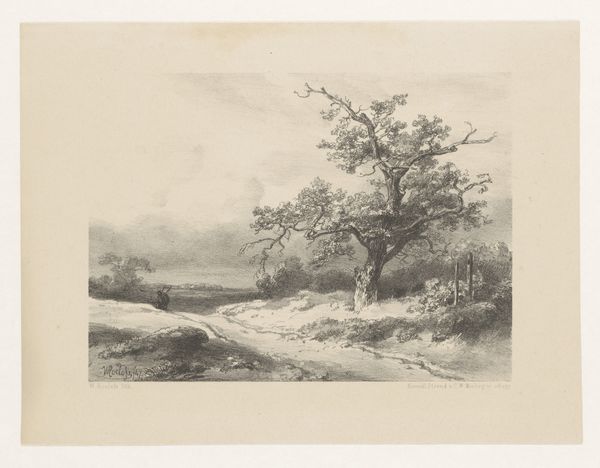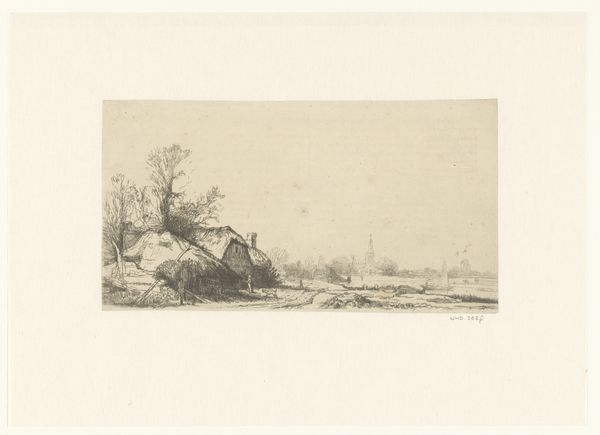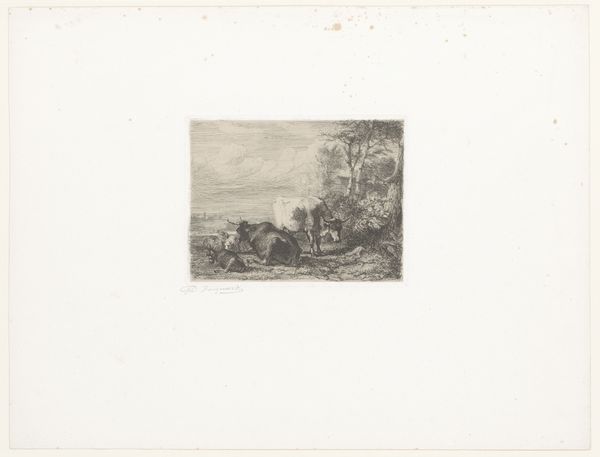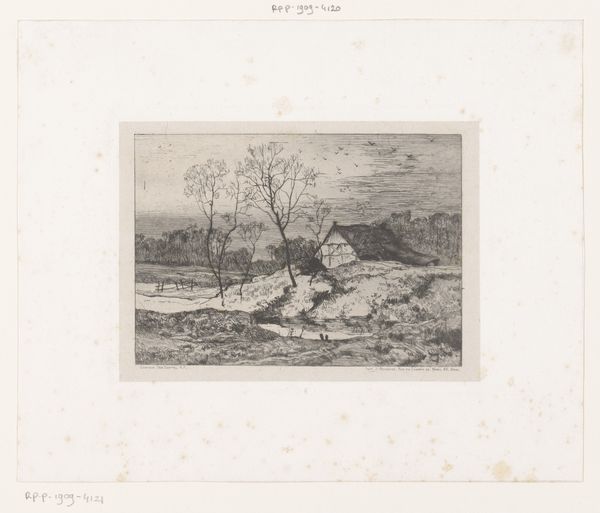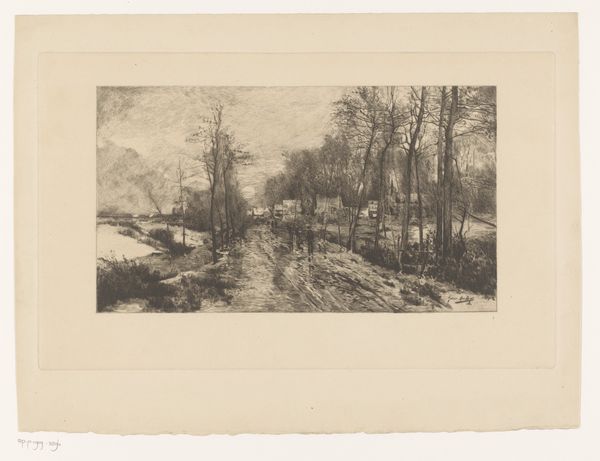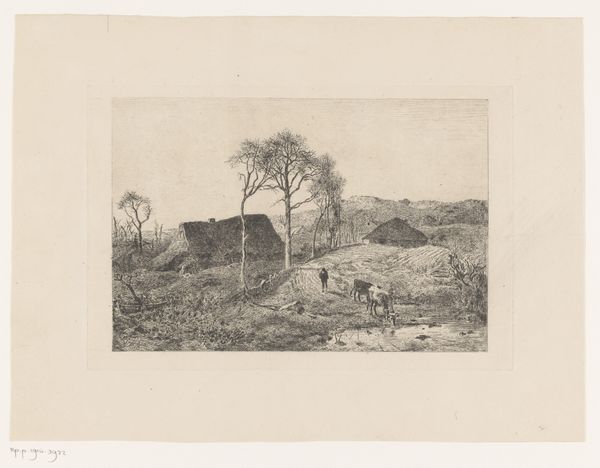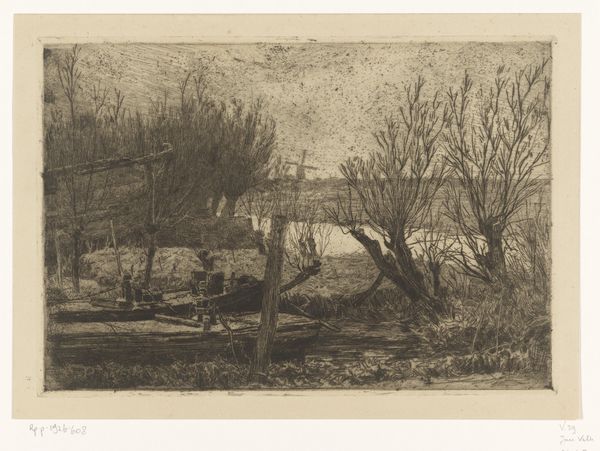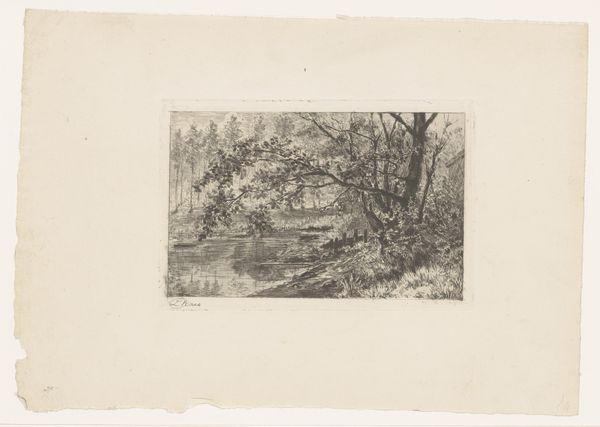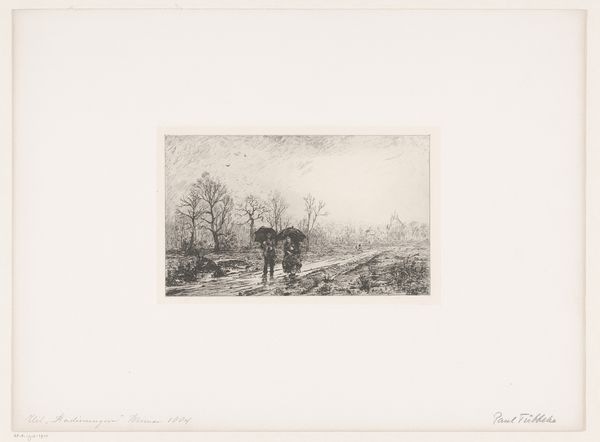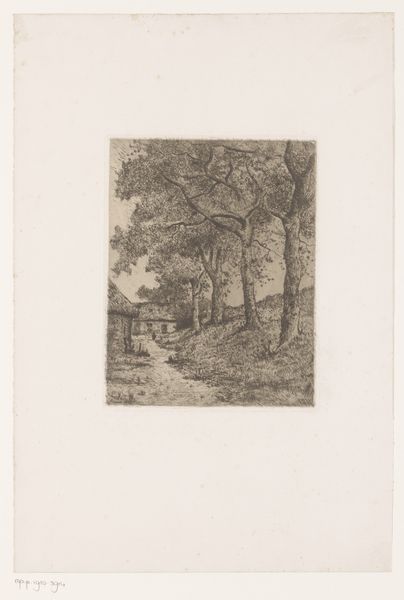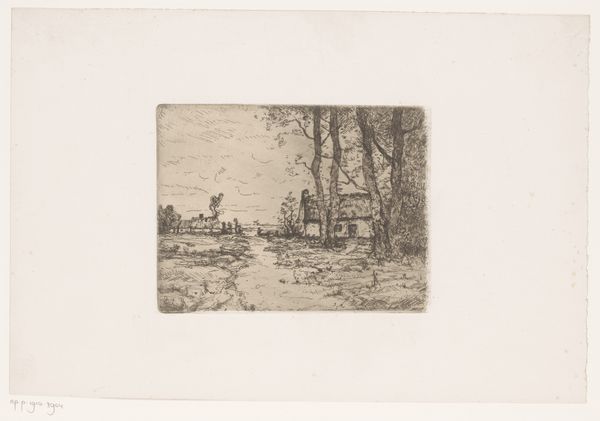
print, etching
# print
#
impressionism
#
etching
#
landscape
#
realism
Dimensions: height 241 mm, width 311 mm
Copyright: Rijks Museum: Open Domain
Curator: Auguste Danse created "Sneeuwlandschap met een schuur aan de bosrand," or "Snowy Landscape with a Shed at the Edge of the Forest," in 1883. It’s an etching, now residing here at the Rijksmuseum. Editor: Wow, it’s... quietly melancholy. The bare trees against that washed-out sky, the way the light catches the snow… it feels like a hushed secret. Like the landscape is holding its breath. Curator: Absolutely. Etchings were becoming more widely available during that period and artists like Danse were starting to experiment with what the technique could do. Consider its relationship with realism and emerging Impressionist tendencies, showing a turn to everyday subjects and atmospheric effects. Editor: I love that—"atmospheric effects.” The trees, especially. How they’re rendered, with this tangled network of lines…it’s almost chaotic, but in a contained way, you know? Captures the randomness of nature itself, but with this clear artistic order applied. And the shed, sort of huddled at the edge of the woods, adds a touch of human presence without disrupting the natural world. Curator: Note how printmaking offered artists a more accessible means to circulate their work, democratizing the art market and allowing images like this rural scene to reach wider audiences beyond the traditional art circles. Landscapes like these became valued for reflecting the particular national identities, especially in emerging states, and offered quiet spaces amid rapid social change. Editor: It’s fascinating how something so still can also feel so full of movement. I can almost hear the crunch of snow underfoot, the wind rustling through the branches… it’s subtle, not shouting, but there. Curator: I think what stands out to me is that Danse does not make the scene conventionally pretty. Instead he represents a realism of a specific environment and social values associated with landscape during the rise of industrial society. Editor: Yeah. No picturesque grandeur, which feels true. Honest. Thanks for letting me into its little world for a while.
Comments
No comments
Be the first to comment and join the conversation on the ultimate creative platform.
